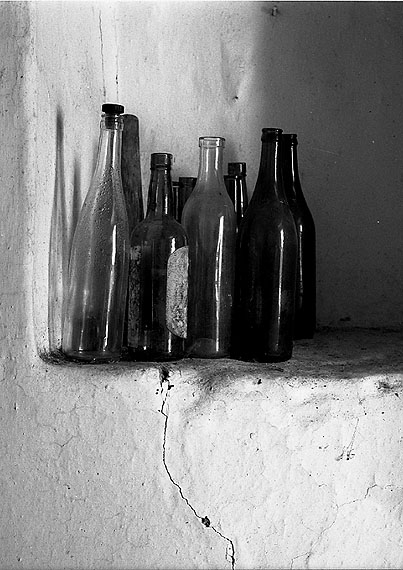
Bert Teunissen, P-7171-3, Silver Gelatin Print, Courtesy Bert Teunissen
Huis Marseille Keizersgracht 401,The Netherlands 1016 EK Amsterdam Pays-Bas
Existential Theme. Marrigje de Maar photographs the ephemeral world of the home, of being rooted. As she sees it, the essence of this universal human value is mainly to be found inside a house. Within its walls this could be anything from the space around the hearth, a living room, a kitchen or the area where people sleep. De Maar seeks those striking and magical places where families have come together for generations—where life has 'worn itself into' a house. Modernity, style and status, folklore and even interior design are all, in her view, subordinate to the revelation of this subtle weave that life and cohabitation have imposed on these houses through the course of time.
Sphere of Activity. Remarkably, though, the territory that she has chosen for this investigation—China—is far removed from her own Dutch culture. There she has photographed the interiors of hundreds of houses. Now, after six years and five trips to China, Red Roses, Yellow Rain represents a substantial group of work that has great social/historical as well as artistic value. Though it may simply be a matter of chance, the timing of this project did coincide with an unprecedented surge of new building by which China aimed, in a single stroke, to present itself as a modern nation. While vast areas of housing in many Chinese communes were being demolished in order to make way for the modern age and its contemporary lifestyle and attitudes, De Maar found a surprising diversity of types and uses of classical living spaces. There are stone and wooden houses, as well as the Mongolians' felt steppe tents, called tepees or yurts. We also see a few examples of the most frugal dwellings, such as mud huts and the minimalist urban-workers’ quarters consisting of a bed, a clothesline and a chair. Never before has the worn and intimate character of household life in China, in all its culturally hybrid forms, been revealed in such a direct manner.
In 2006/2007 Bert Teunissen exhibited in Huis Marseille for the first time with roughly sixty photographs from his Domestic Landscape archive, which then consisted of 250 images. Now this archive is about fifteen years old and comprises visual material from nearly every country in Europe. It is a personal archive, based on Teunissen's passion for peasant life and especially for the way in which daylight sets its tone. His specific focus is the semi- darkness in these rural dwellings which causes the inhabitants and furniture in them to become a graphic entity. Both the exhibition and the publication Domestic Landscapes (Aperture, 2007) received considerable attention and publicity at that time.
Lesser known yet equally intense are the photographs made by Bert Teunissen on his way to the locations. Travelog consists solely of travel impressions in black & white, taken with a hand-held camera. Rich in contrast, this is an almost filmic account of being on the road. The work is being shown at Huis Marseille for the first time and in connection with that of Marrigje de Maar. Travelog is not so much an archive, as Domestic Landscapes is, but rather a collection of Teunissen's impressions while travelling and being on vacation. It could perhaps be described as one immense photographic sketchbook, which began in 2003 with his first trip to Japan. From that point on, he simply continued. Bert Teunissen has proven to be a born collector: not only of photographs, archive material and these snapshots, but also of handmade tools, household goods, preserve jars, preserved food. Literally everything related to his trips is meticulously listed and stored away. For this modest exhibition Teunissen arranged his photographs and diary excerpts by trip, his ultimate aim being to produce a complete series of travel books with them. For the exhibition he hopes to have finished the first two volumes of his eighteen planned publications. As an anthology Travelog is so pure that the intensity of observation and the dynamics that abound in it have a strong symbiosis with the works in Marrigje de Maar's exhibition.

